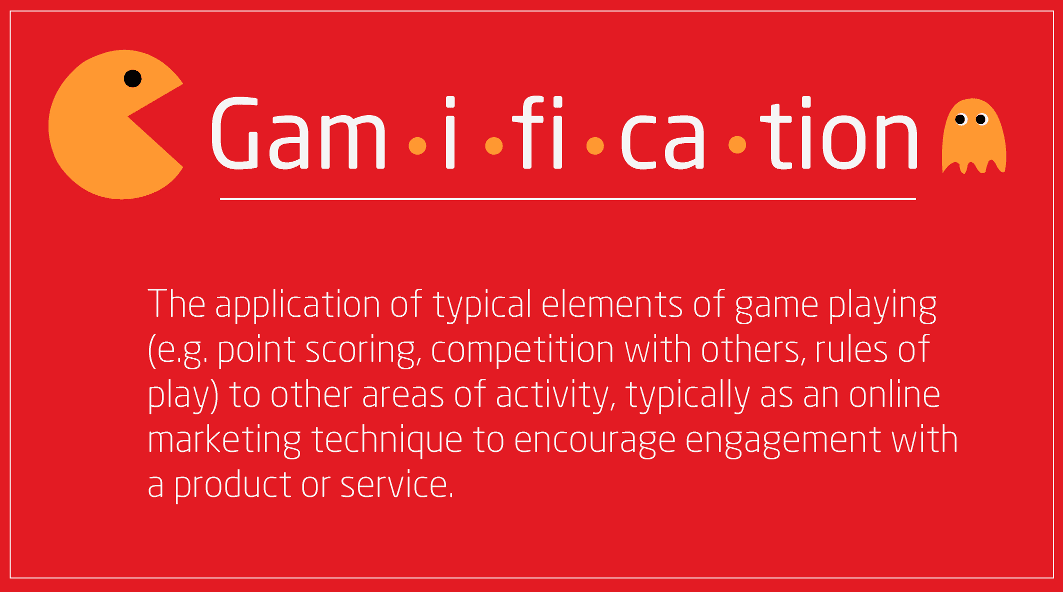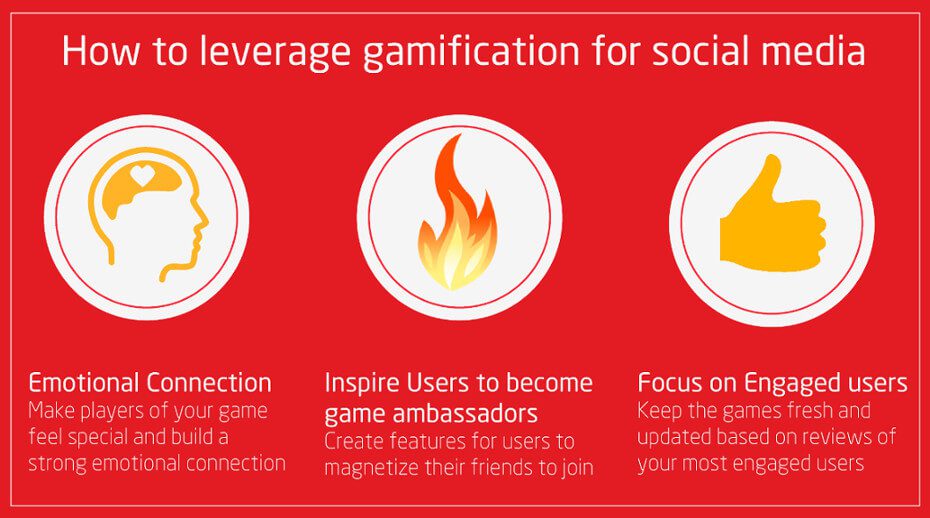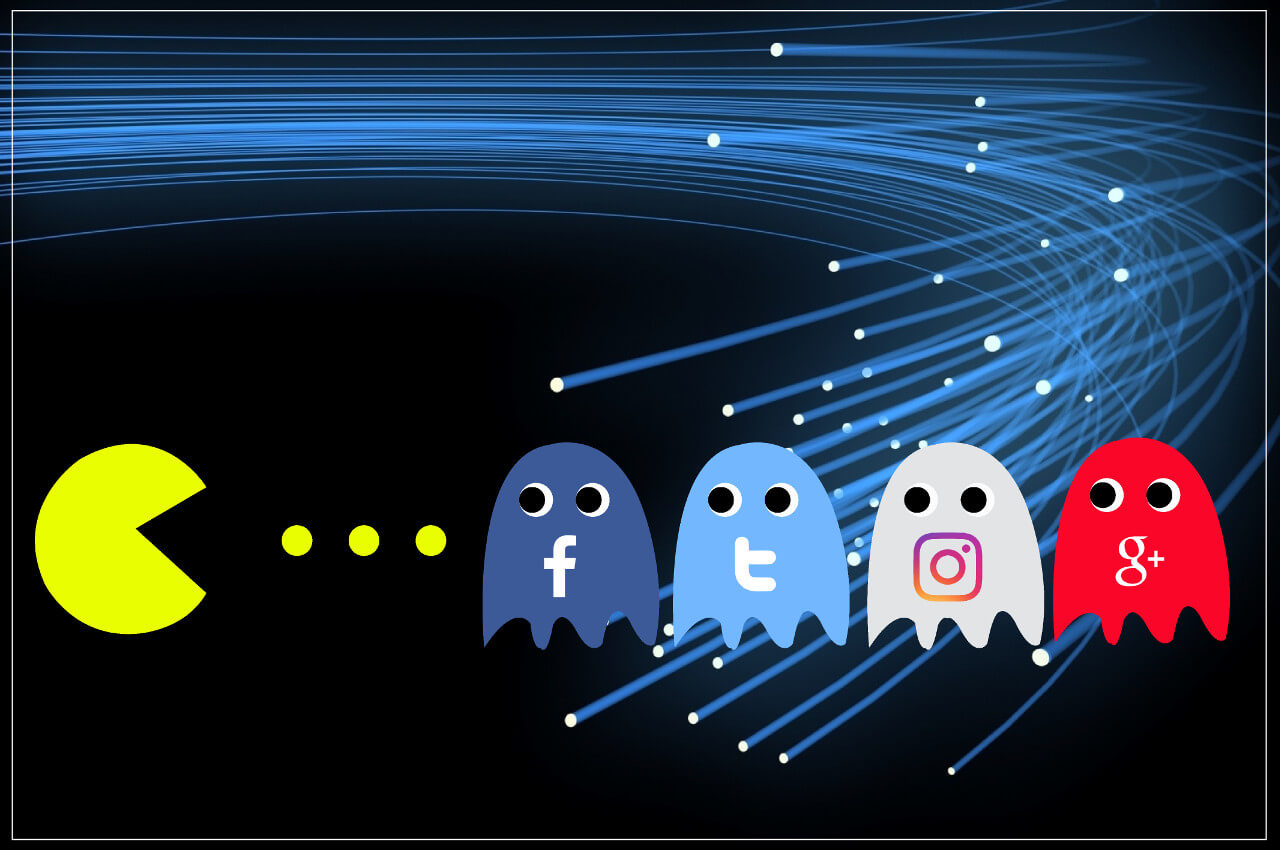Gamification is ubiquitous.
The global gamification market is estimated to grow from USD 1.65 Billion in 2015 to USD 11.10 Billion by 2020, at a CAGR of 46.3%.
As we remain deluged with games on a myriad of channels, a good number have taken hold in our personal lives.
“Tell us how many differences you see in the 2 pictures.” How many times have you tried to solve such a puzzle online? Did you earn a badge or were you lucky enough to play the next level?
Angry Birds, Two Dots or Candy Crush, which one is your addiction?
The simple reason for your addiction is your mindset to see yourself on the top of the leaderboard or be the player with maximum points and badges. The point is gamification. It’s simple – games are not just for kids, and gamification is more than just a game.
Of course, these games are challenging, motivating, and funny. But we want our friends to see us win, so we use social media to talk about our successes. So who is going to win today? With every winning follower, brands are winning big. Brands, through gamification, can build an emotional connection with their followers, which leads to long-term relationships. What’s fun for you has turned out to be a proven marketing strategy for brands to engage with their audience and create powerful brand advocates.

Gamification in Social Media
Gamification is the use of game mechanics in non-entertainment environments. Playfulness, transparency, and challenge can motivate users to participate in an ongoing competition, thus enhancing social media engagement. Users often get incentives for participating, e.g. in the form of badges. Concepts like mission, levels, and leaderboards are interactive ways to keep users engaged with the games. A solid game will tempt you to continue playing. Moreover, it also prompts you to share stories of how you stack up against competitors.
It is important for brands to ensure that their social media channels attract repeat traffic. Of course, the onus is on brands to make sure their followers have a good reason to come back. Gamification, if implemented well, can pan out to be a blockbuster strategy for brands to attract repeat traffic, boost interaction and garner crowdsourcing capabilities.
Benefits of Gamification in Social Media
The objective of gamification is not to have another game on social media for users to waste time collecting points. Companies, through gamification, can stop hunting for likes and shares on social media channels. Rather, companies can identify followers, who genuinely admire their brand. By all means, gamification enables followers to express, share their personal narrative, and validate emotions. Brands can even gamify in social media platforms to align with their business objectives. A perfect game can motivate users to accomplish, win and finally align their behavior with the goals of a brand. Additionally, gamification also helps foster brand loyalty and virality, coupled with opportunities to garner user-generated content (UGC).
How to leverage gamification for social media success?

Lesson 1: The Game of Gamification – Emotional Connection
The theory behind gamification is to create an emotional connection with a brand’s audiences or solve a business problem. Any game on social media should focus on ensuring a special experience for users. Therefore, if a brand offers a tempting game, it can trend among others, and soon go viral.
Doritos Roulette challenge was a campaign gamified by Doritos asking consumers to try a bag of chips. The campaign to share experiences of eating spicy chips received plenty of videos from consumers and was a smashing success. It received more than 22,000 likes and at least 8,000 shares on Facebook.
Similarly, Facebook gamified one of its features called ‘Facebook Editor’ to allow users to suggest edits. With leaderboard, progress levels and badges well integrated, this tool allows Facebook to receive data suggestions and review suggestions from users. Users across the globe compete and receive badges, ultimately helping Facebook enrich data quality and accuracy.
Lesson 2: Turn Users into Ambassadors, and Inspire
Once a brand is into gamification, it should focus on encouraging users to influence others to join the game. Social media is surely the best platform to make people aware. However, gamification must be integrated with appealing features to magnetize friends to join the game and compete. In essence, turning users into ambassadors is the best way to empower them to inspire others to join.
Khan Academy, which used to be a guy teaching mathematics on YouTube, has achieved a lot – it has created a portal of over 3,000 educational videos and millions of students by gamifying the learning experience. With game mechanics, one can unlock new classes and become more skilled with badges.
Lesson 3: Never Lose Sight of Engaged Users
The most important factor that is often overlooked in executing gamification is who to focus on. Instead of trying to reach out to a new audience, it is better to focus on the already engaged users. In gamification, it is imperative to keep the games fresh and updated. The reviews of engaged users help brands with insightful information for continuous updates, bug fixes and the addition of features.
A user climbs the leaderboard on the food ordering app ‘Zomato’ with every review of the order quality. This helps Zomato to maintain ratings for food suppliers and share obliging information on social media channels.
Key Takeaway: Challenge, Spark Curiosity, and Listen
Therefore, brands should pay attention to feedbacks, reviews, and referrals by listening and tracking social media conversation. Responding to audience feedback can amplify a brand’s social media visibility and create a robust brand image. Finally, it is important for a brand to analyze the psychology of human interaction, and to know why followers engage with the brand.
Next Stop: Analyzing Gamification
Researchers say that emotional connections underpin the success of digital initiatives, which is taken up by businesses in the form of gamification on social media. Gamification can be a key differentiator for brands to build everlasting relationships with their fans. At the same time, it is crucial for brands to analyze user engagement data in the age of the digital-savvy user.
Social media has matured. And underlying the success of gamification is the evolution of cognitive digital platforms. As research keeps pushing the boundaries of tech innovation, the next stop in the journey of gamification is a leap to predictive analytics and simulation of human emotions. It gives a new meaning to gamification, with an opportunity for brands to uncover new relationships.
What’s next? Stay tuned for our upcoming blog on using gamification intelligently, by leveraging analytics and turning your insights into actions.









